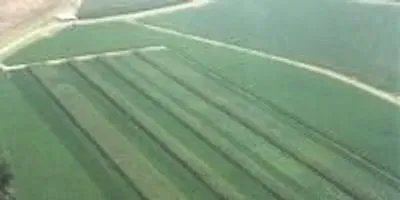 An aerial photo of agronomic systems study in Milan, Tenn.Photo credit: Jason Wight
An aerial photo of agronomic systems study in Milan, Tenn.Photo credit: Jason Wight
Continuous cropping systems without rotations or cover crops are perceived as unsustainable for long-term yield and soil health.
Continuous systems, defined as continually producing a crop on the same parcel of land for more than three years, is thought to reduce yields. Given that crop rotations and soil amendments (cover crops and poultry litter) may alleviate issues associated with continuous cropping, research into their combined effects is necessary to make recommendations that improve soil quality and yield.
In an article recently published in Agronomy Journal, researchers studied combinations of cropping sequence (corn, soybean, and cotton) and soil amendment/cover crops (hairy vetch, Austrian winter pea, wheat, poultry litter, and a fallow control) at two sites in Tennessee over a 12-year study period. Based on 12-year yields, a moderate-to-no yield penalty existed for continuous soybean, whereas yield benefits (11%) arose from poultry litter compared to wheat cover crop.
This study determined that across all study years, incorporating corn once within a four-year cycle resulted in eight percent greater yields than continuous soybean, whereas cotton (once or twice within a rotation) did not. Consequently, including corn once within a four-year cropping rotation with poultry litter improved soybean yields, concurrent with increases in soil N, P, K, and soil organic carbon.










